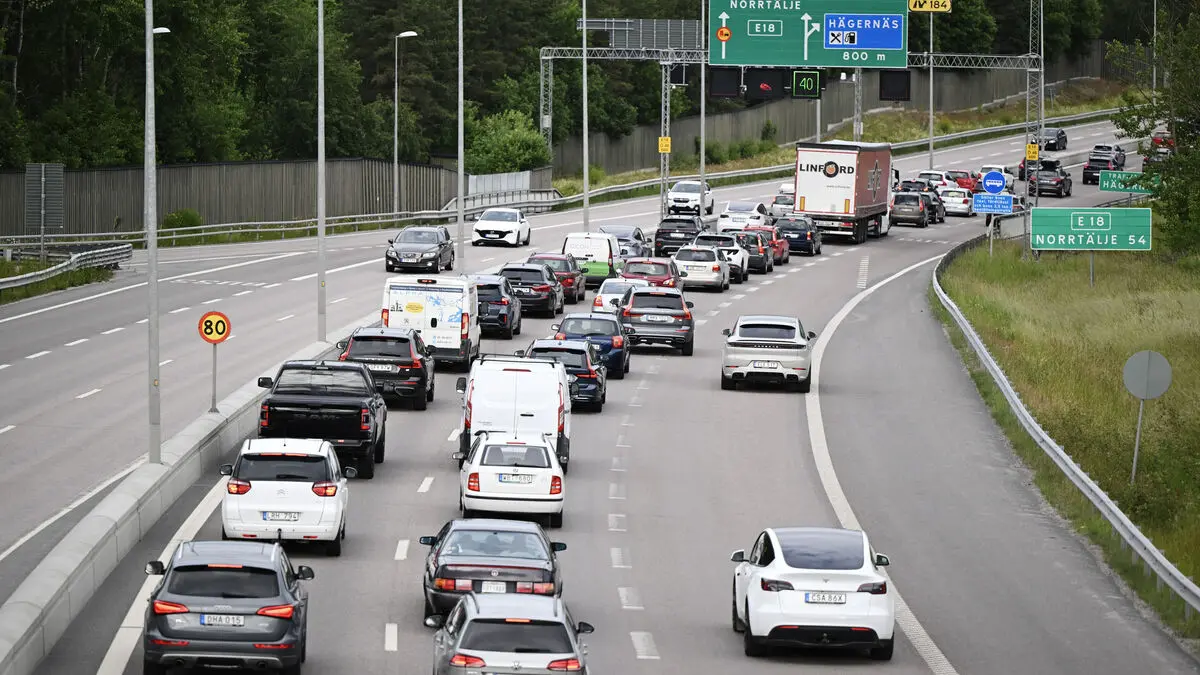The Environmental Objectives Committee, which includes all parliamentary parties, is today submitting its proposals to Minister for Climate and Environment Romina Pourmokhtari (L).
I hope we are done with the nonsense about allegedly abolished climate goals or lowered ambitions, because it is not worthy of Sweden, she says.
The assignment has been to review the Swedish interim targets for 2030, which mainly concern emissions from traffic, agriculture and heating of houses. They will guide climate policy until 2045, when the goal is for Sweden to have no net emissions of greenhouse gases.
“Not a revolution”
The Environmental Targets Committee largely agrees that the Swedish targets should be retained, but they are being cleaned up and made more comparable with the EU's.
"We have not made a revolution of the Swedish climate goals but a revision," says the committee's chairman, Christofer Fjellner (M).
Instead of today's target of a 63 percent reduction in emissions compared to 1990, the target will be changed to 60 percent compared to 2005, the same base year that the EU is based on. This means that the level of ambition will remain intact.
We do not want to increase or decrease the ambition of the Swedish climate target, says Fjellner.
SD wants to scrap
One of the biggest challenges is reducing emissions from transport. It is also the so-called transport target – a 70 percent reduction by 2030 – that is most controversial. But the committee chooses to keep it, even though MP and V want an even clearer target and SD believes it should be scrapped.
We don't think we should have authorities and a lot of bureaucrats working to put forward proposals to achieve this goal, when it is not realistic, says Martin Kinnunen (SD).
SD believes that they should have cleaned up the climate goals even more when they had the chance.
At the same time, we note that for the first time ever, the Environmental Objectives Committee has managed to present proposals that do not make climate policy worse and even more ineffective and unrealistic. No one in Sweden will notice any difference after this, says Kinnunen.
Politics that doesn't exist
The Green Party objects to the fact that nine months have been spent discussing whether the targets should remain and how they are constructed.
The mission should instead have been to develop measures to reduce emissions and reach the target, says Katarina Luhr (MP).
Romina Pourmokhtari admits that the transport target is difficult to achieve. The Tidö parties say no to increasing the reduction obligation and would rather focus on electrification.
Our path requires more policies that do not yet exist, so it is quite clear that this government needs to do more, she says.
The overall climate goal is that Sweden should have no net emissions of greenhouse gases into the atmosphere by 2045 at the latest. That will not change.
The current interim target of 63 percent lower emissions in 2030 than in 1990 is proposed to be given a new base year – the same as the EU's target. The target would then be changed to a 60 percent reduction in emissions by 2030, compared to 2005.
It is proposed that a maximum of 10 percent of the emission reductions in the new 60 percent target be achieved through so-called complementary measures.
The transport target is maintained, meaning that emissions from domestic transport, excluding domestic flights, should be reduced by at least 70 percent by 2030 compared to 2010.
The EU's so-called ESR commitment, which primarily covers transport and agriculture, means that Sweden must reduce emissions by 50 percent by 2030 compared to 2005.
Source: Environmental Objectives Committee





